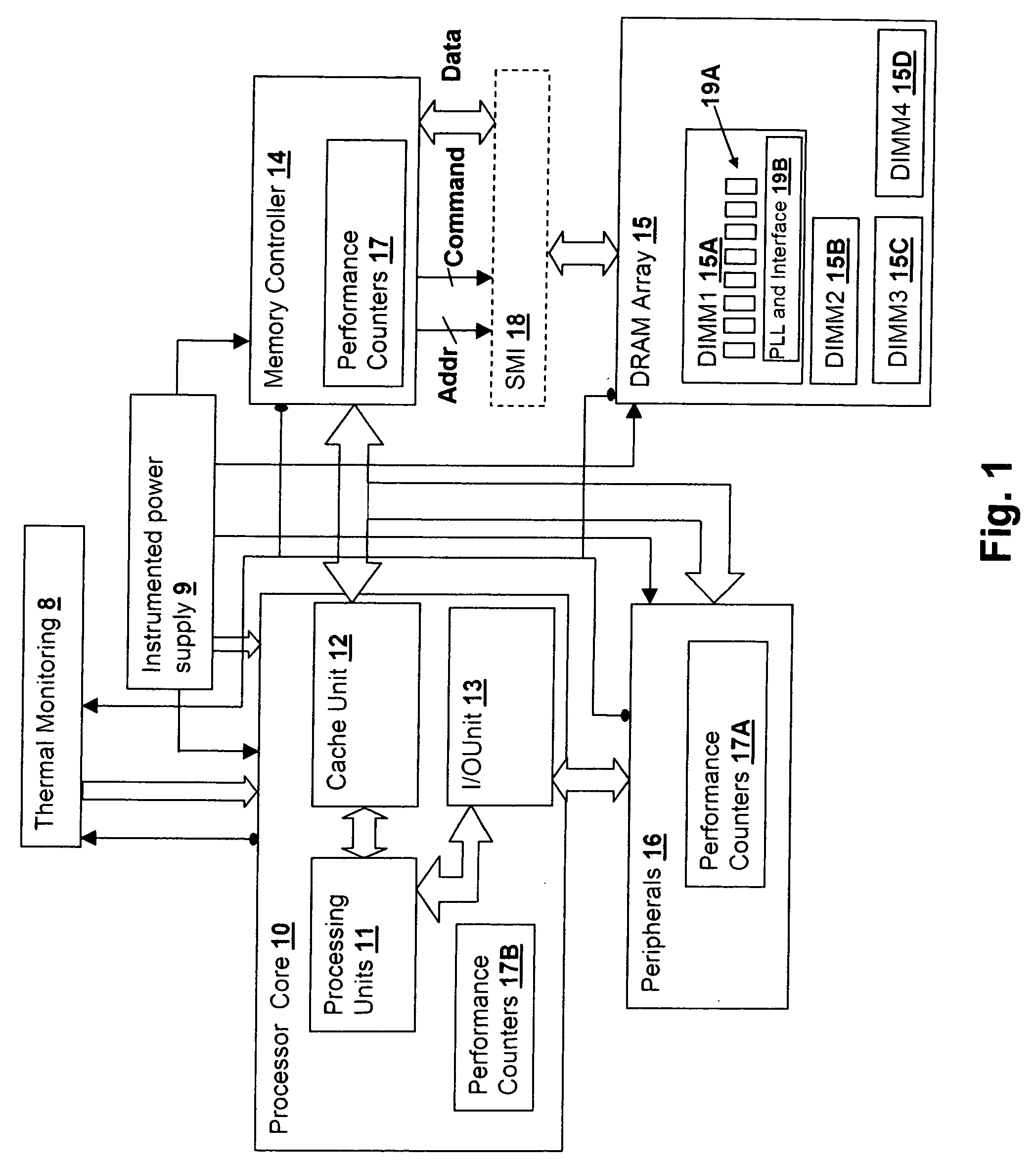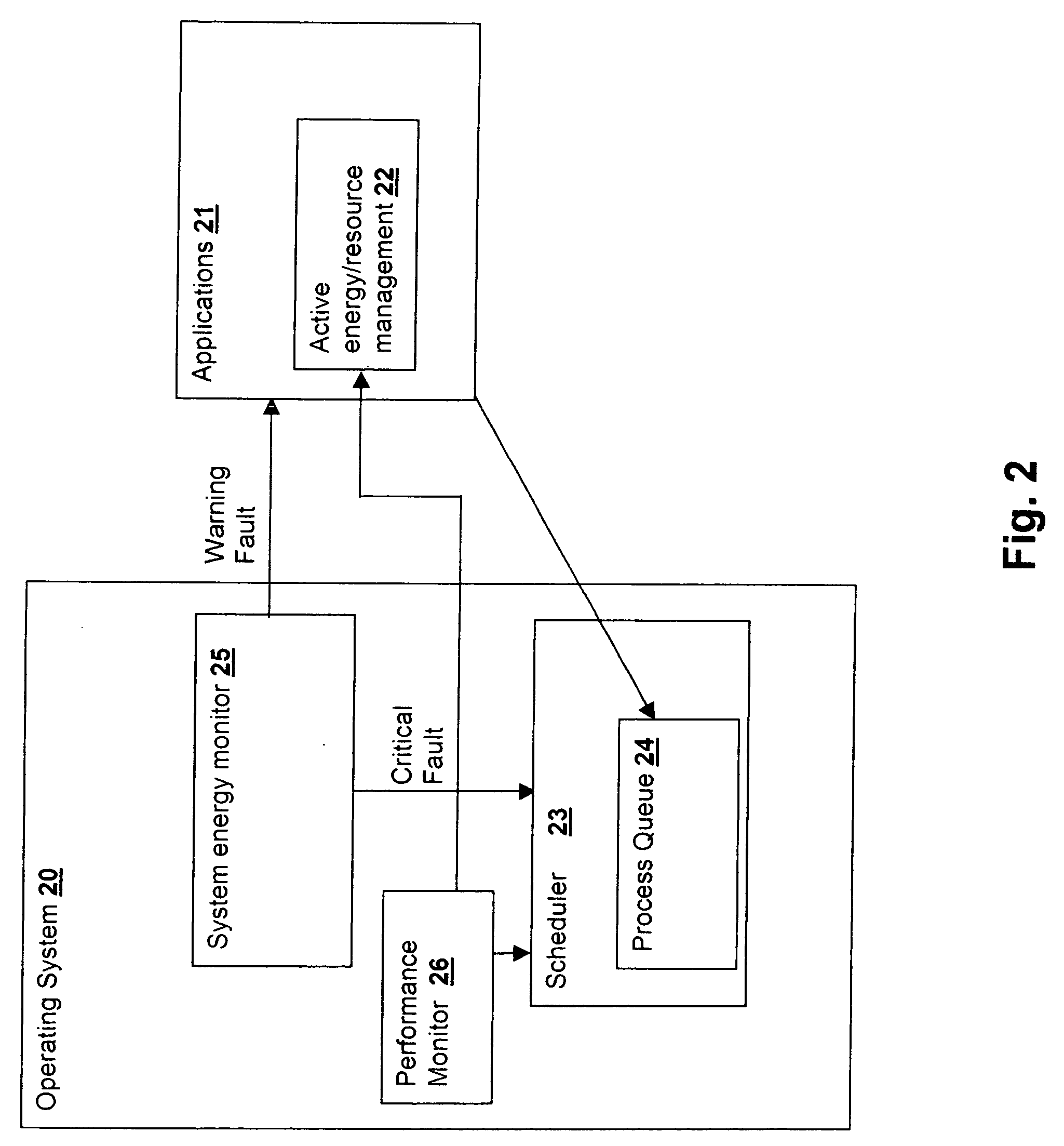Method and system for energy management via energy-aware process scheduling
a process scheduling and energy management technology, applied in the direction of liquid/fluent solid measurement, sustainable buildings, instruments, etc., can solve the problems of insufficient power supply, drastic reduction in performance, and inability to completely effected energy management throughout the system, so as to reduce energy consumption/power dissipation, reduce energy requirements, and reduce energy requirements.
- Summary
- Abstract
- Description
- Claims
- Application Information
AI Technical Summary
Benefits of technology
Problems solved by technology
Method used
Image
Examples
Embodiment Construction
[0018] The present invention concerns primarily energy management enforced by the operating system scheduler, but also concerns the use of pragmatic faults to inform an application of the need to reduce energy use within a processing system. A warning is issued to an application and the application, if so designed, reduces its resource requirements (or in the case of a background task may re-schedule) in order to permit the system to conserve energy. For example, if an application is using large memory arrays that are statically allocated and otherwise might use dynamic allocation to reduce the size of the arrays, the application can reduce the size of the static allocation in response to an issued warning, in order to permit the system to place a larger number of memory modules in a energy-saving state. Similarly, if the application is using the processor to perform, for example, a floating point intensive real-time display of a result of a computation that is not actually required...
PUM
 Login to View More
Login to View More Abstract
Description
Claims
Application Information
 Login to View More
Login to View More - R&D
- Intellectual Property
- Life Sciences
- Materials
- Tech Scout
- Unparalleled Data Quality
- Higher Quality Content
- 60% Fewer Hallucinations
Browse by: Latest US Patents, China's latest patents, Technical Efficacy Thesaurus, Application Domain, Technology Topic, Popular Technical Reports.
© 2025 PatSnap. All rights reserved.Legal|Privacy policy|Modern Slavery Act Transparency Statement|Sitemap|About US| Contact US: help@patsnap.com



